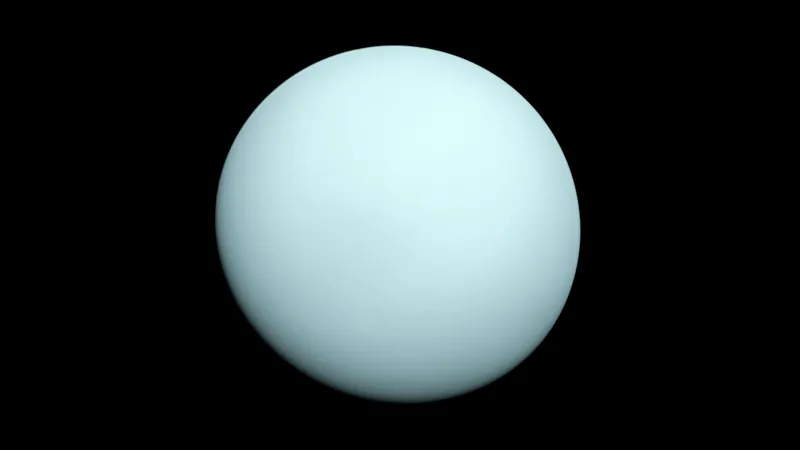
Revolutionary Study Unveils Secrets of Exoplanetary Systems with Compact Orbits
2025-06-09
Author: Benjamin
A Paradigm Shift in Planet Formation Theory
Traditionally, the formation of stars and planets has been viewed as a two-step, separate process: stars form first, followed by planets. However, groundbreaking research from the Southwest Research Institute (SwRI) is challenging this notion. The study reveals that planet formation can actually begin during the last stages of stellar formation, turning previously held beliefs on their head.
Mystery of Compact Exoplanet Systems
The cosmos is home to thousands of known exoplanets, with a remarkable number of compact systems where multiple planets orbit exceedingly close to their host star. This stands in stark contrast to our solar system, which lacks any planets closer to the Sun than Mercury. Surprisingly, across numerous compact systems, a consistent mass ratio between the planets and their central stars has been observed, raising intriguing questions about their formation.
Innovative Simulations Shed Light on Formation Mechanisms
Dr. Raluca Rufu and Dr. Robin Canup, both part of SwRI’s Solar System Science and Exploration Division, employed advanced simulations that indicate surviving early-formed planets align with key features of compact exoplanet systems. These include tightly-knit planetary orbits and that puzzling common mass ratio. Their findings echo previous observations from the Atacama Large Millimeter Array (ALMA) telescope, which suggest that planet growth may indeed start earlier than conventionally believed.
Insights from Nature Communications
Describing compact systems as one of the most intriguing mysteries in exoplanet research, Rufu remarked, "They feature multiple rocky planets that resemble 'peas-in-a-pod,' and their unique mass ratios contrast sharply with those in our solar system." The study, published in *Nature Communications*, presents a compelling new model for the formation of these enigmatic systems.
The New Model Explained
The new model posits that during the formation of a star, planets begin to form within a circumstellar disk fueled by the ongoing infall of gas and dust. As these planets grow, they gather rocky materials while gradually spiraling inward due to interactions with surrounding gas. This growth not only leads to the formation of compact planetary systems but also aligns their mass ratios with those observed in existing compact exoplanetary systems.
Connecting Compact Systems to Giant Planet Moons
Interestingly, the team draws parallels between the mass ratios of compact exoplanetary systems and the moons of gas giants like Jupiter. Both systems share a similar formation process, suggesting that compact exoplanets might be remnants of a same underlying mechanism executed at different scales. However, the timing of disk dispersal is key to understanding the differences in mass ratios.
A Broader Implication for Astrobiology
The findings underscore a significant leap in our understanding of planetary formation, suggesting that the principles of early planetary assembly may apply across diverse cosmic scales. This research opens up exciting avenues for future exploration, compelling scientists to reconsider how exoplanets evolve.
Final Thoughts
The implications of this study are profound, shedding light not just on the formation of compact exoplanet systems but potentially influencing our understanding of the broader cosmos. As researchers continue diving into this fascinating field, we may unravel even more secrets about our universe's planetary architectures.









 Brasil (PT)
Brasil (PT)
 Canada (EN)
Canada (EN)
 Chile (ES)
Chile (ES)
 Česko (CS)
Česko (CS)
 대한민국 (KO)
대한민국 (KO)
 España (ES)
España (ES)
 France (FR)
France (FR)
 Hong Kong (EN)
Hong Kong (EN)
 Italia (IT)
Italia (IT)
 日本 (JA)
日本 (JA)
 Magyarország (HU)
Magyarország (HU)
 Norge (NO)
Norge (NO)
 Polska (PL)
Polska (PL)
 Schweiz (DE)
Schweiz (DE)
 Singapore (EN)
Singapore (EN)
 Sverige (SV)
Sverige (SV)
 Suomi (FI)
Suomi (FI)
 Türkiye (TR)
Türkiye (TR)
 الإمارات العربية المتحدة (AR)
الإمارات العربية المتحدة (AR)